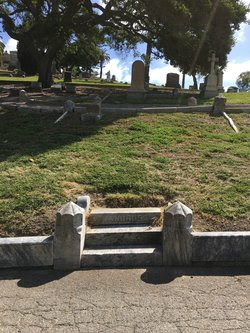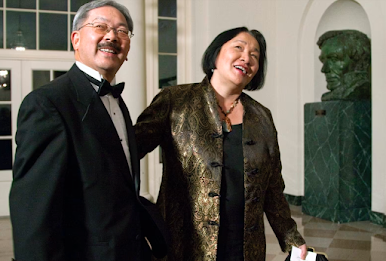 |
| Black Diamond Mines and Norton/Webster grave marker |
Lot 1, Plot 327
Noah Norton (1788–1871) was one of those remarkable frontier figures whose life spanned wars, migrations, and industrial revolutions. Born at Norton Hill, Greene County, New York, he served as a lieutenant in the War of 1812, where he distinguished himself at the Battle of Lundy’s Lane, earning the notice of General Winfield Scott. Later, during the Mexican-American War, he again served under Scott, this time in secret service. Between these chapters, he helped establish Adrian, Michigan, where he became the first brickmaker and one of its earliest settlers.
Yet it was in California where Norton left his most lasting mark. Like so many veterans and adventurers of his generation, he caught gold fever and journeyed west. By 1855, he had turned his attention from precious metals to coal, founding the town of Nortonville in the rolling hills north of Mount Diablo. In 1861, he confirmed the discovery of a rich coal seam—soon nicknamed “black diamonds.” This discovery would give rise to the Black Diamond Mines, the first and largest coal mining region in California.
 |
| Nortonville from EBRPD website |
Coal was a critical energy source for a rapidly industrializing state. In the 1850s and 1860s, California needed fuel for steamships that plied the coast, for the expanding railroad network, for factories, and for homes in fast-growing cities like San Francisco and Stockton. The Contra Costa deposits offered exactly what was needed. By the 1860s, companies like the Black Diamond Coal Mining Company consolidated the operations and expanded them into one of California’s most important energy suppliers.
The coal towns of Nortonville, Somersville, Stewartville, West Hartley, and Judsonville sprang up almost overnight. Nortonville, named for its founder, became the hub, while Somersville grew into the largest and most cosmopolitan of the five settlements. Together they thrived for decades, drawing immigrants from Wales, Ireland, Italy, and beyond. At its height, the region produced nearly four million tons of coal, helping to power ships, locomotives, power plants, and furnaces across Northern California.
Life in the mines was grueling and often dangerous. Men and boys, some as young as eight, labored underground in narrow shafts lit only by flickering lamps. Cave-ins, explosions, and respiratory illnesses were constant threats. Families lived in modest company-owned houses, often with little more than coal dust for a garden bed. Yet community life also blossomed—schools, churches, saloons, and theaters gave a sense of stability, and the miners’ resilience built a proud legacy of labor in California’s early industrial history.
 |
| Black Diamond Mines from EBRPD website |
By the early 1900s, however, coal’s future had dimmed. Rising costs of extraction, along with competition from cheaper and more efficient fuels like petroleum and natural gas, forced the mines to close around 1906. The towns were abandoned, their residents scattering to nearby farming and industrial communities. The landscape slowly reclaimed the once-bustling settlements, leaving only faint traces. Today, the Black Diamond Mines Regional Preserve protects this legacy, allowing visitors to walk among ruins, restored mine shafts, and the Rose Hill Cemetery, where many of the miners and their families rest.
 |
| Sarah Norton and Rose Hill Cemetery gravestone |
Noah Norton’s pioneering spirit made Nortonville possible, but the story of the community is also inseparable from his widow, Sarah Norton. Unlike her husband, Sarah was remembered less for founding than for nurturing. Known for her independent nature and her skepticism toward religion, Sarah nonetheless played a vital role in the everyday life of the mining families as a midwife. She was in constant demand, venturing out at all hours of the night, in all manner of weather, to assist women through childbirth. In an era when professional medical care was limited and mortality rates were high, Sarah’s skill and dedication made her indispensable to the coal towns.
Her death in 1879 became one of the region’s enduring legends. On October 5, while on her way to visit a sick woman, Sarah’s horse bolted, throwing her from her buggy and killing her. Her funeral took a dramatic turn. As her body was carried into the church, a fierce storm erupted, scattering the mourners. The next day, a second attempt to hold services was again disrupted by a violent storm. Believing this to be Sarah’s own rejection of religious rites, her friends buried her quietly at Rose Hill Cemetery without ceremony.
From that moment, folklore began to grow around her grave. Locals claimed Sarah’s ghost haunted the hills—sometimes appearing as a glowing lady, sometimes called the “White Witch” or the “Gliding Woman.” Over the years, stories multiplied: a phantom horse-drawn hearse, children dressed in black, and even a glowing cross hovering in the cemetery. Whether rooted in imagination, atmospheric phenomena, or the grief of a close-knit community, the legend of Sarah Norton remains one of the most compelling ghost stories in the East Bay.
Noah and Sarah Norton together embody the dual heritage of Nortonville. Noah, the soldier and founder, brought energy and vision to the rugged hills, helping ignite California’s first coal boom. Sarah, the healer and skeptic, represented the daily endurance of community life, her legend transcending death itself. Though the towns of the Black Diamond Mines have long vanished, their history—and their hauntings—remain preserved in the hills above Contra Costa County, where visitors still walk among the remnants of a vanished age.
Sources: East Bay Regional Park District, Wikipedia, Find a Grave, "Biographical Sketches Of Early And Prominent Settlers And Representative Men" by J.P. Munro-Fraser (1882), History of Contra Costa County, California Historical Society (mine photo)













































